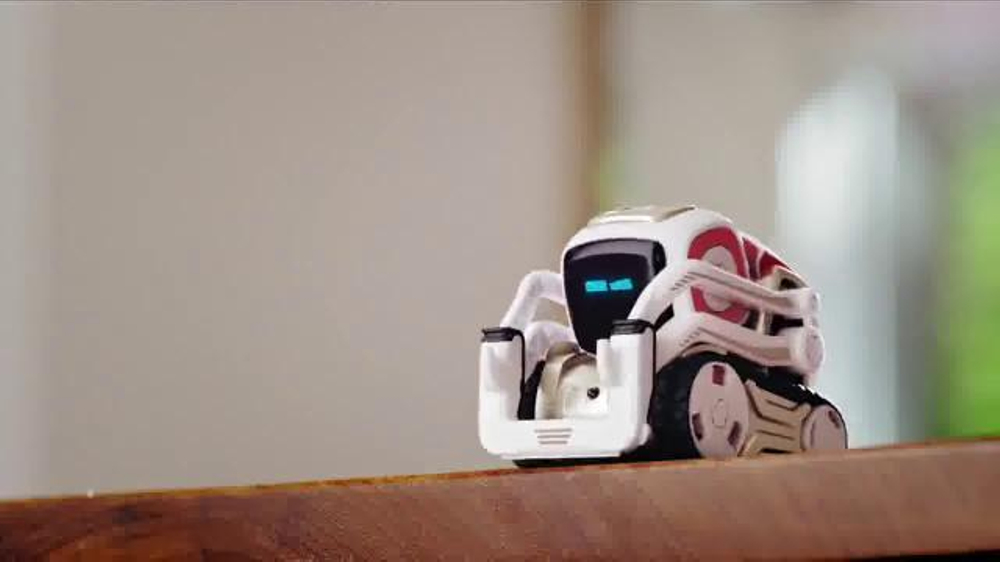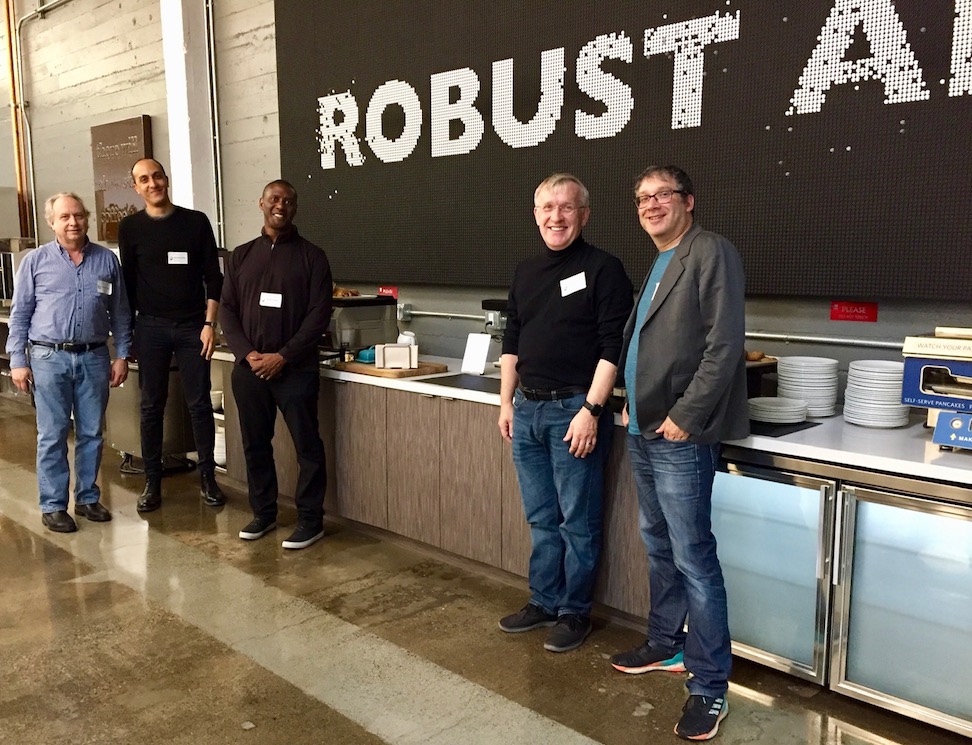We’re more than halfway through 2019, and there’s been a lot to talk about. Here are The Robot Report‘s picks for the top 10 robotics stories during the first half of 2019. Please share your thoughts below via the survey or the comments section.

Anki Cozmo robot. | Credit: Anki
1. Consumer robotics company Anki shuts down
The struggles of consumer robotics companies are well documented – see Jibo, Keecker, Laundroid, Mayfield Robotics – but it still came as a major blow to the industry when Anki shut down on April 29.
Anki raised more than $200 million since it was founded in 2010 and claimed it had revenue of nearly $100 million in revenue in 2017. And according to Anki Co-Founder and CEO Boris Sofman, who was hired by Waymo to lead its autonomous trucking efforts, the company “shipped over 3.5 million devices and robots around the world.”
Anki’s intellectual property is controlled by Silicon Valley Bank, which has had a security interest in Anki’s copyrights, patents and trademarks since March 30, 2018. Sources told The Robot Report that Anki already had a prototype of its next consumer robot. Anki also had a strategic partnership in place that “fell through at the last minute,” according to a former Anki employee.
2. Boston Dynamics enters logistics market
Another major surprise occurred April 2 when Boston Dynamics acquired Kinema Systems, a Menlo Park, Calif.-based startup that uses vision sensors and deep-learning software to help robots manipulate boxes. Essentially, this was Boston Dynamics’ entrance into the logistics market.
This is another sign of Boston Dynamics being more application-concious since it was acquired by SoftBank in mid-2017. The development of Handle and SpotMini, and the Kinema acquisition, point directly to that.
“I think Google planted the seed,” said Marc Raibert, CEO and Founder of Boston Dynamics. “And all of the other robotics companies near us were much more focused on applications and product than we were. So we’ve been turning that corner. It’s been a consistent thing. It’s not like we got to SoftBank and they hit us with a hammer and suddenly said, ‘make products.’ They’ve been extremely enthusiastic about our R&D work, too. It feels good to do both.”

Robust AI Co-Founders (left to right) Rodney Brooks, Mohamed Amer, Anthony Jules, Henrik Christensen and Gary Marcus at the Robust AI office in Palo Alto, Calif. | Credit: Peter Barret, Playground Global
3. Robust AI wants to give robots common sense
Giving robots the ability to think with common sense is a lofty goal, but an all-star team at Robust AI is trying to do just that. The Palo Alto, Calif.-based startup was announced by co-founder Henrik Christensen during his keynote at the Robotics Summit & Expo, produced by The Robot Report. The company has office space at Playground Global, its main investor, for the next 12 months.
Robust AI is trying to build an industrial-grade cognitive platform for robots. The company’s argument is that deep learning alone is enough to move the needle. To build its cognitive platform, Robust AI will take a hybrid approach by combining multiple techniques, including deep learning and symbolic AI, which was the dominant paradigm of AI research from the mid-1950s until the late 1980s.
4. Amazon launches new logistics robots
Kiva Systems, now known as Amazon Robotics after it was acquired by Amazon for $775 million in 2012, essentially created the mobile logistics robotics market we know today. The so-called Amazon effect prompted other startups to develop and offer automated guided vehicles (AGVs) and autonomous mobile robots (AMRs) to retailers and third-party logistics (3PL) companies.
It’s major news when Amazon makes a move in this space, and Amazon has made several in 2019. On April 11, Amazon acquired Boulder, Colo.-based Canvas Technology for an unspecified amount. Canvas uses “spatial AI” to enable mobile robots to navigate safely around people in dynamic environments. It claimed that its combination of sensors and simultaneous localization and mapping (SLAM) software can enable AMRs to operate without relying on a prior map. The robots can continuously update a shared map, according to the company.
Amazon also developed new warehouse robots designed to accelerate automation in its fulfillment centers. Amazon said the new robots represent a major redesign of the Kiva Systems robots. Amazon warehouses already have 800 units of one of the new robots, Pegasus, up and running.
5. ROS for Windows 10 official
Microsoft introduced last fall an experimental release of the Robot Operating System (ROS) for Windows 10. During its 2019 Build conference in Seattle, Microsoft announced ROS is now generally available on Windows 10 IoT Enterprise.
ROS is an open-source platform that provides robotics developers with a variety of libraries and tools to build robots. ROS for Windows 10 is an opportunity for Microsoft to expose its Azure cloud platform, and associated products, to ROS developers around the world.
6. iRobot introduces Terra t7 robot lawn mower
An iRobot robotic lawn mower was one of the worst-kept secrets in robotics. In January 2019, the iRobot Terra t7 robot lawn mower was finally unveiled. The Terra t7 robot lawn mower will be available for sale in Germany and as a beta program in the US in 2019.
Specs and pricing aren’t known at this point, but iRobot says ease of use is the main differentiator. Instead of burying and running boundary wires, users need to place wireless beacons around their yards and manually drive the Terra t7 robot lawn mower around to teach it the layout. The beacons need to remain in place throughout the mowing season. Terra uses the beacons to calculate its position in the yard. The robot will operate autonomously after the initial training run.
7. Big tech companies working on development tools
Add Facebook and Microsoft to the list of major technology companies working on robotics development tools. Facebook in late June open-sourced its PyRobot framework for robotics research and benchmarking. PyRobot, which Facebook developed with Carnegie Mellon University, is designed to allow AI researchers and students to get robots working in just a few hours without specialized knowledge of device drivers, controls, or planning.
On top of its ROS work, Microsoft is building an end-to-end toolchain that makes it easier for developers to create autonomous systems. The platform uses Microsoft AI, Azure tools and simulation technologies, such as Microsoft’s AirSim or industry simulators, that allow machines to learn in safe, realistic environments. The platform also uses what Microsoft is calling “machine teaching,” which relies on a developer’s or subject matter expert’s knowledge to break a large problem into smaller chunks.
In November 2018, Amazon Web Services released its RoboMaker cloud robotics platform to give developers a centralized environment to build, test, and deploy robots with the cloud. Google also has a cloud robotics platform that was announced last year.
8. Aria Insights shuts down
Drone maker Aria Insights abruptly shut down on March 21. Formerly known as CyPhy Works, the company was primarily known for its Persistent Aerial Reconnaissance and Communications (PARC) platform, a tethered drone that provided secure communication and continuous flight to customers.
CyPhy Works rebranded as Aria Insights in January 2019 to focus more on using artificial intelligence and machine learning to help analyze data collected by drones. But it was too little too late.
CyPhy Works was founded in 2008 by Helen Greiner, who also co-founded iRobot in 1990. Greiner left CyPhy Works in 2017 and in June 2018 was named an advisor to the US Army for robotics, autonomous systems and AI.
Robotics Investments for First 6 Months of 2019
| Month | Investment Amount |
|---|---|
| January | $644M |
| February | $4.3B |
| March | $1.3B |
| April | $6.5B |
| May | $1.5B |
| June | $1.4B |
| Yearly Total | $15.64B |
9. Robotics investments
Investments into robotics companies have totaled more than $15.64 billion in the first half of 2019. Some of the leading markets investment-wise include healthcare robotics, logistics and manufacturing. But autonomous vehicles take the cake thus far. In June, for example, autonomous vehicles accounted for $717 million of the $1.4 billion that was invested into robotics companies.
Check out the table above for a month-by-month breakdown of robotics investments and follow our Investments Section for the latest news and analysis.
10. Johnson & Johnson acquired Auris Health
Johnson & Johnson (J&J) subsidiary Ethicon acquired Auris Health and its FDA-cleared Monarch platform for $3.4 billion. Auris is surgical robotics pioneer Dr. Fred Moll’s newest robotic surgical play. The acquisition is one of the 10 largest VC-backed, private M&A transactions of all-time and will be both the largest robotics and largest medtech private M&A deal in history. Kiva Systems previously held the title for largest robotics acquisition when it was purchased by Amazon for $775 million.
Auris’ robotic Monarch platform has FDA clearance for diagnostic and therapeutic bronchoscopic procedures. The system features a controller interface for navigating the integrated flexible robotic endoscope into the periphery of the lung and combines traditional endoscopic views with computer-assisted navigation based on 3D patient models. Auris said J&J’s global distribution will broaden access to the Monarch Platform.
The post Top 10 robotics stories during 1st half of 2019 appeared first on The Robot Report.
阅读原文